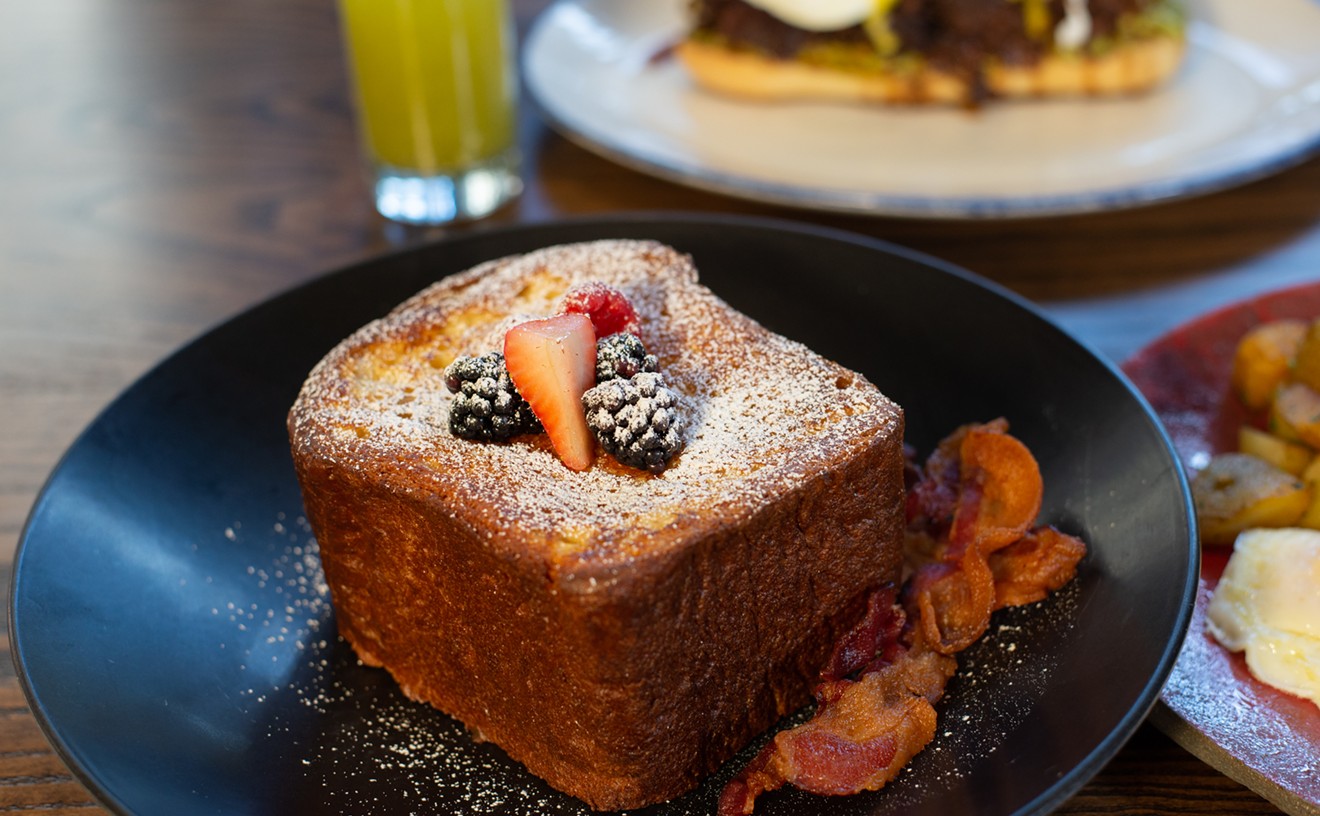I never expected freeze-dried food would cross my path as a food critic. I was in Park City, Utah for this year's Association of Food Journalists conference recently, and food storage was the topic of one of the scheduled discussions. I was hoping the presentation would feature a cute old lady with glass jars and a pressure cooker, but instead of learning the finer points of putting up summer peaches I got a detailed discussion on stockpiling food for decades.
Between Mormons following religious direction and otherwise prudent individuals, it's estimated that up to 25 percent of Utah residents are sitting on a three-month supply of food. Some fill food safe buckets with rice, grains and other staples, but a growing number are buying collections of elaborate, freeze-dried meals in self-contained pouches.
The latter option can be expensive. Daily Bread, a Utah-based company that offers storable food and emergency supplies, sells a yearlong meal plan for a family of five that costs nearly $10,000. Their freeze-dried products have a shelf life of 25 years, and according to CEO Mark Hyland they're delicious.
Food storage techniques and statistics were interesting enough, but it was "delicious" that really pricked up my ears. I wanted to know how food that was frozen to temperatures rarely seen on earth, zapped of its moisture and stuffed in an airtight bag for a decade, could actually taste good. I also wondered what it would feel like to eat freeze-dried food for a year after some unfathomable catastrophic disaster, but mostly I wanted an excuse to validate what I knew I was about to do. Hyland had handed out samples of his products and I was about to eat all of them.
I'm not entirely new to freeze-dried foods. I grew up an hour away from the Smithsonian in Washington D.C., and a trip to the Air and Space Museum wasn't complete without a packaged of freeze-dried ice cream. It comes in a multi-colored brick the size of a Klondike bar and has the consistency and flavor of aerated chalk. I'd eat my "astronaut" ice cream on the walk back to the subway, taunted by an endless line of street carts covered in pictures of Drumsticks and push pops, while other children painted their faces with the real deal. This happened once a year for more years than I'm willing to admit.
Astronaut marketing no longer causes my pupils to dilate, though, and even the ice cream sold by street vendors tastes waxy to me now. I wondered if the technology used to preserve foods had advanced significantly in the past few decades. What if freeze-dried food really was delicious now? Certainly for Hyland to call a product delicious in font of a room of journalists and food critics had to take a significant amount of confidence.
I couldn't even wait till I got home from the conference. The sour memory of repeated childhood disappointment loomed as I prepared "bacon and eggs" in my Utah hotel room. Cooking freeze-dried food involves ripping open the pouch, removing the iron-oxide package that's been helping keep the food dry, and then adding a measure of boiling water. Inside the re-sealed pouch, the contents theoretically suck up the moisture like a sponge, eventually resembling the food before it went into the bag in the first place.
After the allotted time, my eggs didn't absorb all the water, so I drained the bag a bit before I plated them. The eggs bounced out of the bag like spongy, yellow cubes. If you've ever enjoyed a continental breakfast at a one-star hotel, you know exactly what these eggs taste like, but these didn't fully rehydrate. At the center of every bite was an unfortunate chalky texture that recalled the astronaut ice cream of my youth. The bacon bits that flecked the eggs tasted a lot like a wetter and meatier version of the bacon bits you find on a salad bar.
My patience restored, I waited until I was home to try the chicken a la king. This time the ingredients absorbed the water completely, producing soft noodles and a thick, creamy sauce. The texture was a bit toothier than something you'd pull out of a can or a freezer tray, but the flavor was about the same. The vegetables were almost indiscernible, a vague chicken-flavor dominated the entire dish and it was salty enough to make me crave a glass of water when I was finished.
Certainly if a hurricane, earthquake or other event caused a serious problem in our food supply chain, Daily Bread's breakfast eggs would look pretty great. They certainly taste better than the military rations that were delivered all over Alabama and Louisiana after hurricane Katrina, and they're lighter and easy to move around.
Buying a year's worth of this stuff, on the other hand, seems insane. After the fun factor wanes (it happens fast), the dishes I tried were only suitable for reasons of absolute necessity. I also tried I tried a pouch of freeze-dried pineapple and another of corn. They tasted better, but had less than a 50 calories each and very few nutrients, which points out another glaring problem with Daily Bread's products.
The average American consumes 2700 calories a day, according to the USDA. Some meal plans offered by Daily Bread provide an adult as little as 890 calories -- a huge deficit that could have disaster survivors cooking up extra food and running out before they'd expected to. When asked about the calories in the meal plans, Hyland said customers can build their own supply with an expert's assistance. Not only is that a lot of salty, mushy food to endure, but the cost of a 1-year plan could double depending on your daily caloric requirements. Costs that begin to approach $20,000 would be a lot harder to swallow than freeze-dried eggs.
It's hard not to think there's a better way. Certainly at these prices, you could store up a lot of high-quality grains and legumes, maybe a couple of nice French hams, and a garden's worth of canned vegetables and fruit. Imagine a post apocalyptic world where everyone else is eating macaroni and cheese out of a bag and you're sitting over a bowl of ham and bean soup, and finishing with canned peaches baked into a nice peach pie. It sounds like a decent meal to me, apocalypse or not. And it surely beats the hell out of astronaut food.










